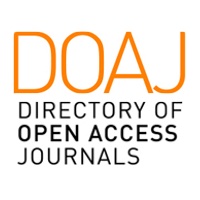Factores asociados con la lactancia materna en madres concurrentes a servicios de Atención Primaria en Salud en el NOA
Resumen
La lactancia materna exclusiva (LME) hasta los 6 meses, y complementada hasta el segundo año (LMC) han sido identificadas como intervenciones de prevención altamente eficaces para reducir la mortalidad infantil. Si bien la práctica de la lactancia materna (LM) está en aumento en Latinoamérica, diversos factores, como la educación y el acceso a servicios de salud están relacionados con menores signos de mejora en prácticas de lactancia. En este estudio examinamos la relación entre factores sociodemográficos y la práctica de la LM en una población de madres participantes de programas de salud materno-infantil en cuatro provincias del noroeste argentino. Se utilizó un diseño transversal retrospectivo aplicando un cuestionario para medir características demográficas, presencia de síntomas de depresión y ansiedad, y prácticas de LM. En análisis multivariado el ser ama de casa o estudiante estuvo positivamente relacionado con el inicio de la LM, mientras que el reportar síntomas de ansiedad estuvo relacionado negativamente. Los síntomas depresivos incrementaban la probabilidad de practicar la LM por menos de 6 meses. Las madres de menos de 30 años y quienes se identificaron como Indígena o Indígena y europea mostraron mayor probabilidad de continuar la LM hasta los 12 meses ó más. La probabilidad de practicar la LME fue menor en madres con síntomas depresivos. Conocer la adherencia o no a las recomendaciones sobre la práctica de la LM, puede guiar las intervenciones destinadas a la promoción de estas prácticas. En nuestra población la etnicidad y el rol de la sintomatología de problemas de salud mental en las prácticas de lactancia materna surgen como factores que ameritan ser estudiados en mayor profundidad. Los resultados ponen de relieve la importancia del desarrollo de abordajes integrales en los que se trabajen no solo aspectos informativos o educativos, sino también mecanismos de apoyo social para las mujeres que afrontan limitaciones particulares.
Palabras clave
Referencias
Abeyá Gilardon, E.; Albaizeta, D.; Calvo, E.; Mangialavori, G. y Tenisi, M. (2011) Situación de la lactancia materna en Argentina año 2011. Buenos Aires. Recuperado el 2 de marzo de 2018, de http://www.msal.gob.ar/images/stories/bes/graficos/0000000215cnt-a11a-Situacion-de-la-lactancia-materna-2011.pdf.
Ahlqvist-Björkroth, S.; Vaarno, J.; Junttila, N.; Pajulo, M.; Räihä, H.; Niinikoski, H. y Lagström, H. (2016) Initiation and exclusivity of breastfeeding: association with mothers’ and fathers’ prenatal and postnatal depression and marital distress. Acta Obstetricia et Gynecologica Scandinavica, 95 (4), 396–404.
Bech, P.; Rasmussen, NA.; Raabaek Olsen, L.; Noerholm, V. y Abildgaard, W. (2001) The Sensitivity and specificity of the major depression inventory, using the present state examination as the index of diagnostic validity. Journal of Affective Disorders, 66, 159–64.
Berra, S.; Sabulsky, J.; Rajmil, L.; Passamonte, R.; Pronsato, J. y Butinof, M. (2007) Correlates of breastfeeding duration in an urban cohort from Argentina. Acta Pediatrica, 92 (8), 952-57 Blackwell Publishing Ltd.
Brown, KH.; Black, R.E.; Lopez de Romaña, G. y Creed de Kanashiro, H. (1989) Infant-feeding practices and their relationship with diarrheal and other diseases in Huascar (Lima), Peru. Pediatrics, 83 (1). Recuperado el 2 de marzo de 2018, de http://pediatrics.aappublications.org/content/83/1/31.short.
Castillo, C.; Atalah, E.; Riumallo, J. y Castro, R. (1996) Breast-feeding and the nutritional status of nursing children in Chile. Recuperado el 2 de marzo de 2018, de http://iris.paho.org/xmlui/handle/123456789/27615.
Castro, T.; Grant, C.; Wall, C.; Welch, M.; Marks, E.; Fleming, C.; Teixeira, J.; Bandara, D.; Berry, S. y Morton, S. (2017) Breastfeeding indicators among a nationally representative multi-ethnic sample of New Zeland children. The New Zealand Medical Journal, 130 (1466), 34–44.
Chudasama, R.K.; Patel, PC. y Kavishwar, A.B. (2009) Determinants of exclusive breastfeeding in south Gujarat region of India. Journal of Clinical Medicine Research, 1 (2), 102–8.
Cusminsky, M.; Moreno, E.M. y Suarez Ojeda, E.N. (1988) Crecimiento y desarrollo: hechos y tendencias. OPS. Publicación Científica, 510. Recuperado el 2 de marzo de 2018, de http://bases.bireme.br/cgibin/wxislind.exe/iah/online/?IsisScript=iah/iah.xis&src= google&base=ADOLEC〈=p&nextAction=lnk&exprSearch=86212&indexSearch=ID.
Dias Castro, C. y Figueiredo, B. (2015) Breastfeeding and depression: a systematic review of the literature. Journal of Affective Disorders, 171, 142–54.
Dimond, H.J. y Ashworth, A. (1987) Infant feeding practices in Kenya, Mexico and Malaysia. the rarity of the exclusively breast-fed infant. Human Nutrition. Applied Nutrition, 41 (1), 51–64.
Eidelman, A.I. (2012) Breastfeeding and the use of human milk: an analysis of the American Academy of Pediatrics 2012 breastfeeding policy statement. Breastfeeding Medicine, 7 (5).
Feachem, R.G. y Koblinsky, M.A. (1984) Interventions for the control of diarrheal diseases among young children: promotion of breast-feeding. Bulletin of the World Health Organization 62 (2), 271–91.
Field, T. (2017) Prenatal anxiety effects: a review. Infant Behavior and Development, 49, 120–28.
Flores Ramos, T.; Pereira Nunes, B.; Garcia Neves, R.; Wendt, AT.; Dos Santos Costa, C.; Wehrmeister, F.C. y Dâmaso Bertoldi, A. (2017) Maternal breastfeeding and associated factors in children under two years: the brazilian national health survey, 2013. Cadernos de Saude Publica, 33 (11), e00068816.
França Araujo de, G.V.; Soares Brunken, G.; Da Silva, SM.; Escuder, M.M. y Isoyama Venancio, S. (2007) Determinantes da amamentação no primeiro ano de vida em Cuiabá, Mato Grosso. Revista de Saúde Pública, 41 (5), 711–18.
Gigena, P.C. (2008) Abandono de la lactancia materna exclusiva antes de los seis meses de edad, en mujeres de Villa Del Rosario, Córdoba, Argentina. Claves Odontol 15 (62): 41–46.
Haga, SM.; Lisøy, C.; Drozd, F.; Valla, L. y Slinning, K. (2017) A Population-based study of the relationship between perinatal depressive symptoms and breastfeeding: a cross-lagged panel study. Archives of Women’s Mental Health, 1–8.
Hamada, H.; Chala, S.; Barkat, A. y Lakhdar, A. (2017) Assessment of employment’s impact on breastfeeding practices. Archives de Pediatrie: Organe Officiel de La Societe Francaise de Pediatrie, 24 (8), 720–27.
Hirschman, C. y Butler, M. (1981) Trends and differentials in breast feeding: an update. Demography, 18 (1), 39–54.
INDEC Censo 2010. Recuperado el 5 de marzo de 2018, de https://www.indec.gov.ar/nivel4_default.asp?id_tema_1=2&id_tema_2=41&id_tema_3=135.
Inoue, M.; Binns, CW.; Otsuka, K.; Jimba, M. y Matsubara, M. (2012) Infant feeding practices and breastfeeding duration in Japan: a review. International Breastfeeding Journal, 7 (1), 15.
Jones, K.M.; Power, M.L.; Queenan, J.T. y Schulkin, J. (2015) Racial and ethnic disparities in breastfeeding. Breastfeeding Medicine, 10 (4), 186–96.
Kerstis, B.; Aarts, C.; Tillman, C.; Persson, H.; Engström, G.; Edlund, B.; Öhrvik, J.; Sylvén, S. y Skalkidou, A. (2016) Association between parental depressive symptoms and impaired bonding with the infant. Archives of Women’s Mental Health, 19 (1), 87–94.
Konstantakopoulos, G.; Sofianopoulou, E.; Touloumi, G. y Ploumpidis, D. (2013) Ultra-short questionnaires for the detection of depression and anxiety. Psychiatrike = Psychiatriki, 24 (4), 288–97.
Ladomenou, F.; Moschandreas, J.; Kafatos, A.; Tselentis, Y. y Galanakis, E. (2010) Protective effect of exclusive breastfeeding against infections during infancy: a prospective study. Archives of Disease in Childhood, 95 (12), 1004–8.
Lee, HJ.; Elo, I.T.; Mccollum, K.F. y Culhane, J.F. (2009) Racial/ethnic differences in breastfeeding initiation and duration among low-income inner-city mothers. Social Science Quarterly, 90 (5), 1251–71.
Long, K.Z., Wood, J.W., Vasquez Gariby, E., Weiss, K.M., Mathewson, J.J., De la Cabada, F.J., Dupont, HL, y Wilson, RA (1994) Proportional hazards analysis of diarrhea due to enterotoxigenic escherichia coli and breast feeding in a cohort of urban mexican children. American Journal of Epidemiology, 139 (2), 193–205.
Lutter, CK.; Chaparro, C.M. y Grummer-Strawn, L.M. (2011) Increases in breastfeeding in latin america and the caribbean: an analysis of equity. Health Policy and Planning, 26 (3), 257–65.
Machado, M.C.M., Franklin Assis, K.; De Cássia Carvalho Oliveira, F.; Queiroz Ribeiro, A.; Amaral Araújo, R.M..; Faisal Cury, A.; Priore, S.E. y Do Carmo Castro Franceschini, S. (2014) Determinants of the exclusive breastfeeding abandonment: psychosocial factors. Revista de Saúde Pública, 48 (6), 985–94.
Mardones Santander, F. (1982) Marco histórico para el análisis de las causas del descenso en la práctica de la lactancia materna. Revista Chilena de Pediatría, 53 (6), 607–14.
Margen, S. y Nestlé Infant Formula Audit Commission (1991) Infant feeding in mexico: a study of health facility and mothers’ practices in three regions. Nestlé Infant Formula Audit Commission. Recuperado el 2 de marzo de 2018, de http://agris.fao.org/agris-search/search.do?recordID=US9524470.
Mckinney, C.O.; Hahn-Holbrook, J.; Chase-Lansdale, P.L.; Ramey, S.L.; Krohn, J.; Reed-Vance, M.; Raju, T.N.K.; Shalowitz, M.U. y Community Child Health Research Community Child Health Research Network (2016) Racial and ethnic differences in breastfeeding. Pediatrics, 138 (2), e20152388.
Mcniel, M.E.; Labbok, M.H. y Abrahams, S.W. (2010) What are the risks associated with formula feeding? a re-analysis and review. Birth, 37 (1), 50–58.
MINISTERIO DE SALUD DE LA NACIÓN (2010) Guías alimentarias para la población infantil. Buenos Aires. Recuperado el 2 de marzo de 2018, de http://www.msal.gob.ar/images/stories/bes/graficos/0000000319cnt-A04-guias-alimentarias-pob-inf-equipos.pdf.
Nishioka, E.; Haruna, M.; Ota, E.; Matsuzaki, M.; Murayama, R.; Yoshimura, K. y Murashima, S. (2011) A prospective study of the relationship between breastfeeding and postpartum depressive symptoms appearing at 1-5 months after delivery. Journal of Affective Disorders, 133 (3), 553–59.
Perez-Escamilla, R. (1994) Breastfeeding in Africa and the Latin American and Caribbean Region: the potential role of urbanization. Journal of Tropical Pediatrics, 40 (3), 137–43.
Popkin, B.M.; Adair, L.; Akin, J.S.; Black, R.; Briscoe, J. y Flieger, W. (1990) Breast-feeding and diarrheal morbidity. Pediatrics, 86 (6). Recuperado el 2 de marzo de 2018, de http://pediatrics.aappublications.org/content/86/6/874.short.
Sabulsky, J.; Batrouni, L.; Carballo, R.; Reyna, S.; Quiroga, D.; De Roitter, D.; Brizuela, H. y Gorostiaga, H. (1995) Alimentación en el primer mes de vida, por estratos sociales, Córdoba, Argentina. Boletin Oficina Sanitaria Panamericana, 119 (1), 15–27.
Silva, C.S., Lima, M.C.; Sequeira‐De‐Andrade, L.A.S.; Oliveira, J.S.; Monteiro, J.S.; Lima, N.M.S.; Santos, R.M.A.B. y Lira, P.I.C. (2017) Association between postpartum depression and the practice of exclusive breastfeeding in the first three months of life. Jornal de Pediatria (Versão Em Português), 93 (4), 356–64.
Valdes, V.; Pugin, E.; Schooley, J.; Catalán, S. y Aravena, R. (2000) Clinical support can make the difference in exclusive breastfeeding success among working women. Journal of Tropical Pediatrics, 46 (3), 149–54.
Venancio, S.I.; Loureiro Escuder, M.M.; Kitoko, P.; Ferreira Rea, M. y Monteiro, C.A. (2002) Freqüência e determinantes do aleitamento materno em municípios do estado de São Paulo. Revista de Saúde Pública, 36 (3), 313–18.
Victora, C.; Vaughan, J.P.; Lombardi, C.; Fuchs, S.M.C.; Gigante, L.; Smith, P.; Nobre, L.; Teixeira, A.; Moreira, L. y Barros, F. (1987) Evidence for protection by breast-feeding against infant deaths from infectious diseases in Brazil. The Lancet, 330 (8554), 319–22.
WHO y UNICEF (1990) On the Protection, Promotion and Support of Brestfeeding. Declaration Document Adopted at the WHO/UNICEF Policy Makers’ Meeting on Breastfeeding in the 1990s: Global Initiative. Held at Spedale Degli Innocenti, Italy. (Vol. 10017). Recuperado el 2 de marzo de 2018, de http://www.unicef.org/programme/breastfeeding/innocenti.htm.
Woolhouse, H.; James, J.; Gartland, D.; Mcdonald, E. y Brown, S.J. (2016) Maternal depressive symptoms at three months postpartum and breastfeeding rates at six months postpartum: implications for primary care in a prospective cohort study of primiparous women in Australia. Women and Birth, 29 (4), 381–87.
Zielinska, M.A. y Hamulka, J. (2017) Reasons for non-exclusive breast-feeding in the first 6 months. Pediatrics International.
Enlaces refback
- No hay ningún enlace refback.
Copyright (c) 2019 Revista CUADERNOS FHyCS-UNJu / Open Journal System

Este obra está bajo una licencia de Creative Commons Reconocimiento-NoComercial-CompartirIgual 4.0 Internacional.
Cuadernos FHyCS-UNJu por Facultad de Humanidades y Ciencias Sociales - Universidad Nacional de Jujuy se distribuye bajo una Licencia Creative Commons Atribución-NoComercial-CompartirIgual 4.0 Internacional.
Basada en una obra en http://revista.fhycs.unju.edu.ar/revistacuadernos.
Hecho con OJS - Open Journal System











